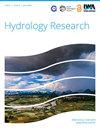基于变压器结合基流分离的新型深度学习降雨-径流模型
IF 2.6
4区 环境科学与生态学
Q2 WATER RESOURCES
引用次数: 0
摘要
精确的长期径流预测在水资源管理中具有重要意义。尽管长短期记忆(LSTM)模型被广泛应用于长期径流预测,但它们也面临着误差累积和计算效率低等挑战。为了应对这些挑战,我们在黄河流域宁夏段采用了一种基于变流器和基流分离法(BS-Former)的新型径流预测方法。为了评估变流器模型的有效性及其对基流分离技术的响应能力,我们构建了 LSTM 和人工神经网络 (ANN) 模型作为比较基准。结果表明,Transformer 在预测性能方面优于其他模型,而基流分离技术则显著提高了 Transformer 模型的性能。具体来说,BS-Former 模型在提前 7 天预测径流方面的性能与 BS-LSTM 模型和 BS-ANN 模型在分别提前 4 天和 2 天预测径流方面的性能相当。总体而言,BS-Former 模型是一种很有前途的长期径流预测工具。本文章由计算机程序翻译,如有差异,请以英文原文为准。
A novel deep learning rainfall–runoff model based on Transformer combined with base flow separation
Precise long-term runoff prediction holds crucial significance in water resource management. Although the long short-term memory (LSTM) model is widely adopted for long-term runoff prediction, they encounter challenges such as error accumulation and low computational efficiency. To address these challenges, we utilized a novel method to predict runoff based on a Transformer and the base flow separation approach (BS-Former) in the Ningxia section of the Yellow River Basin. To evaluate the effectiveness of the Transformer model and its responsiveness to the base flow separation technique, we constructed LSTM and artificial neural network (ANN) models as benchmarks for comparison. The results show that Transformer outperforms the other models in terms of predictive performance and that base flow separation significantly improves the performance of the Transformer model. Specifically, the performance of BS-Former in predicting runoff 7 days in advance is comparable to that of the BS-LSTM and BS-ANN models with lead times of 4 and 2 days, respectively. In general, the BS-Former model is a promising tool for long-term runoff prediction.
求助全文
通过发布文献求助,成功后即可免费获取论文全文。
去求助
来源期刊

Hydrology Research
WATER RESOURCES-
CiteScore
5.00
自引率
7.40%
发文量
0
审稿时长
3.8 months
期刊介绍:
Hydrology Research provides international coverage on all aspects of hydrology in its widest sense, and welcomes the submission of papers from across the subject. While emphasis is placed on studies of the hydrological cycle, the Journal also covers the physics and chemistry of water. Hydrology Research is intended to be a link between basic hydrological research and the practical application of scientific results within the broad field of water management.
 求助内容:
求助内容: 应助结果提醒方式:
应助结果提醒方式:


